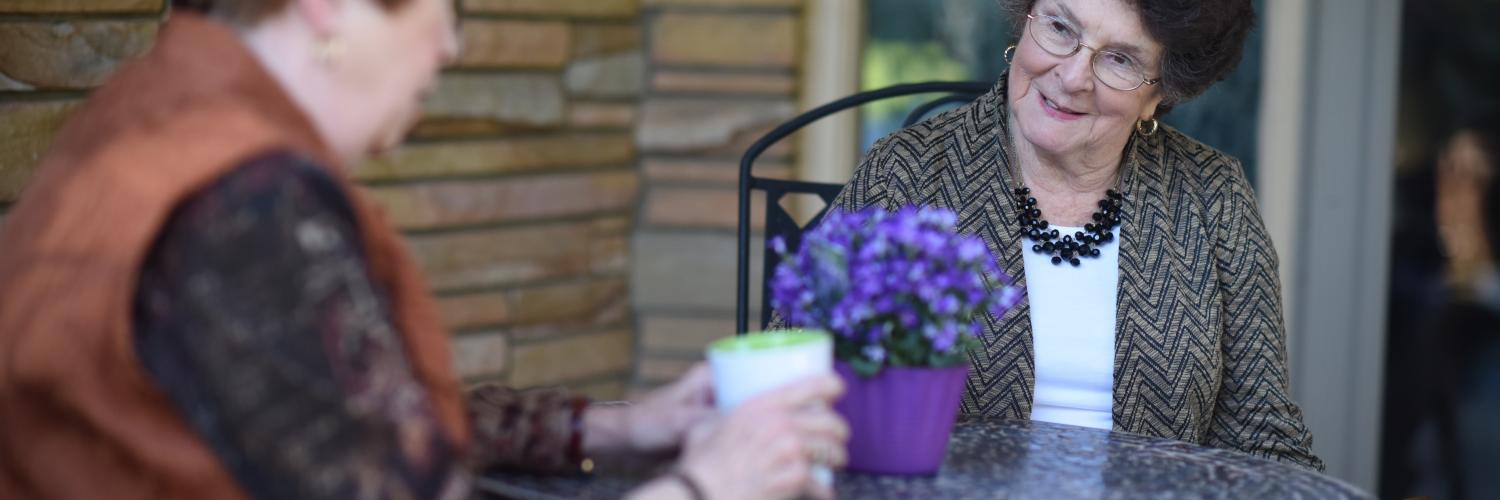We are very lucky to be Wisconsinites. Wisconsin is ranked 2nd in the nation by US World and News Report as a best place for aging. Wisconsin is highly ranked because 70% of it’s 65-and-older population is able-bodied, and have no cognitive, auditory, ambulatory, or self-care difficulty. Additionally, Wisconsin has excellent healthcare and a good quantity and variety of assisted living communities for those who ultimately require care. Another important factor is that Wisconsin uses a portion of its federal and state Medicaid budget to pay for assisted living rather than skilled nursing. Although so many Wisconsinites are well for a good, long time, the truth is many of us will ultimately need care at some point in our futures, and it’s no secret that long term care can be expensive.
Medicaid or Title XIX is a joint federal and state program that pays for long term care in a nursing home or a skilled nursing environment, as well as healthcare, once a person has exhausted his or her assets. In Wisconsin, we use a part of our Medicaid budget to pay for long term care in an assisted living community when someone outlives his or her assets. We call this program Family Care. Family Care is a smart choice that our leaders and lawmakers first piloted in Milwaukee County in 1999. Since that time, most counties throughout the state of Wisconsin have adopted the program.
Why is Family Care a smart program?
First, the cost of being in a skilled nursing home in southeastern Wisconsin ranges from about $10,000 to $14,000 per month. The cost to be in an assisted living community ranges from about $5,000 to $8,000 per month. As private payers, that boils down to about half of the cost to care for our loved one. As taxpayers, we are saving as much as 50% on the cost of caring for our elders when they need it. Essentially, we can pay for two people for the cost of one!
Is assisted living better than skilled nursing?
The second, and probably more important reason to use Medicaid dollars for assisted living, is to keep people living in the assisted living community that has become their home after their assets run out, rather than forcing a move to a skilled nursing facility because of a payer source. An assisted living affords someone a home-like environment. The goal of the assisted living community, as written in our state regulations, is to keep its residents as independent as they can possibly be in the most home-like environment. In an assisted living community, a resident enjoys having his or her own private space or studio apartment as part of a larger home or community setting. The assisted living community has common areas like a living room and dining room for activities and dining together, as well as outdoor areas like a patio or walking paths for getting outside and enjoying some fresh air. These elements make the environment that people are living in and receiving care in a much more positive experience and far less depressing than the long halls and hospital-like environment of a skilled nursing facility.
This home-like environment, routine, and activity which are part of everyday life in a well-run assisted living community can also foster social engagement and lasting relationships which promote a good quality of life for our elders.
This is all very good news for us Wisconsinites – our state is doing things right! But, we need to take the understanding of this concept one step further: an assisted living community is a privately run company.
Do Assisted Living Companies Have to Participate in Family Care?
A Family Care contract with the state of Wisconsin is a choice. It is not a requirement. Since a Family Care contract is a government contract, it may pay as little as .50 or .60 on the dollar. For example, a resident who is paying privately for his or her care may pay $6,000 each month. An assisted living community may only receive as little as $3600 per month from the government to provide the same services once the person is on Family Care. Consequently, some assisted living communities choose not to have a Family Care contract and only accept residents who meet their financial requirements and will not likely exhaust funds.
How much money do I need for assisted living?
The communities that are running a good business and are providing a high quality assisted living experience have a commonality in their method. They are even able to take care of their residents after they exhaust their funds. The way they do it is by having an expectation that a resident will be able to pay for her care for a specific number of months or years prior to needing to go on public funding. Many times the magic number is 2 or 3 years of private pay. If on average, assisted living care costs $6000/month, a person who has 2 or 3 years of private pay, or $144,000 – $214,000 in available funds to pay for her long term care, has excellent power of choice in terms of finding the best assisted living community to fit her needs.
The reason for this “magic number” is that most people are at the end of their lives when they are in need of care, and statistics indicate that the average length of stay in a higher care assisted living community is 29 months. There are always outliers to every statistic, so certainly there are people who live as short as a few months in assisted living, or people who live 7 or 8 years in assisted living. If an assisted living community asks for 2 or 3 years of private pay, the likelihood is that they will only have to take public funding for those who are the outliers. These communities that use this methodology tend to keep well maintained and updated buildings, keep better care staff, have worthwhile and engaging activities, good food and happy residents. It is one piece of the puzzle.
Can an Assisted Living Company Kick My Mom Out?
The simple answer, sadly, is yes, but if you ask the right questions and do your homework, you can uncover those gems that have found a way to run a great business and provide great care. Frequently, people are spending what is left of their life savings on their care. Allowing someone to stay in the home where she knows her caregivers and other residents, rather than forcing a move to an unknown facility at her weakest and most vulnerable state, is just the right thing to do. From a business perspective, it makes sense to keep a resident they know, rather than to have an empty room for some time and then have to get to know a new resident.
Having some understanding of how our Family Care program works in the state of Wisconsin helps us be more savvy consumers when making choices for our loved ones who need care.



